Explainer: Why are MK-84 2,000-lb bombs approved by Trump for Israel so deadly?
By Ivan Kesic
US President Donald Trump's shipment of MK-84 one-ton bombs to Tel Aviv has generated both anger and outrage, signaling the continuation of all-out American support for the regime.
It also implies that the Israeli regime is desperately looking to replenish its stockpiles, which were emptied in the destruction of civilian infrastructure during the genocidal war on the Gaza Strip.
The Israeli military reported on Sunday that a shipment of 1,800 MK-84 heavy bombs, approved last month by Trump, had arrived at the occupied Port of Ashdod and been trucked to airbases.
Israeli war minister Israel Katz thanked the newly-elected US president for releasing the bombs, saying the shipment represents a "significant asset" for the occupation’s air force and serves as "further evidence of the strong alliance" between the Zionist regime and the United States.
According to the Israeli war ministry, since the beginning of the occupation regime's bloody Gaza onslaught in October 2023, over 76,000 tons of military equipment have arrived in the entity on 678 transport planes and 129 ships, the vast majority from the United States.
Joe Biden administration had previously sent thousands of MK-84 bombs to Tel Aviv in the first seven months of the genocidal war on the besieged territory, but in May last year, it suspended new deliveries as an eyewash to hoodwink the international community that it was concerned with the human rights.
Biden sought to pacify progressive US voters during the election season but the move failed to deliver results as he eventually lost the election to Trump.
His administration, however, continued to overtly and covertly arm the Israeli regime with billions of dollars worth of weaponry, including huge numbers of smaller yet deadly bombs.
After assuming the new presidential mandate, Trump immediately lifted the blockade on the export of MK-87 bombs, saying on January 26: "We released them [the bombs]... and they'll have them".
Trump's decision sparked worldwide condemnation over fears that Netanyahu is planning to violate the ceasefire and continue with the massive destruction of Palestinian civilian infrastructure.
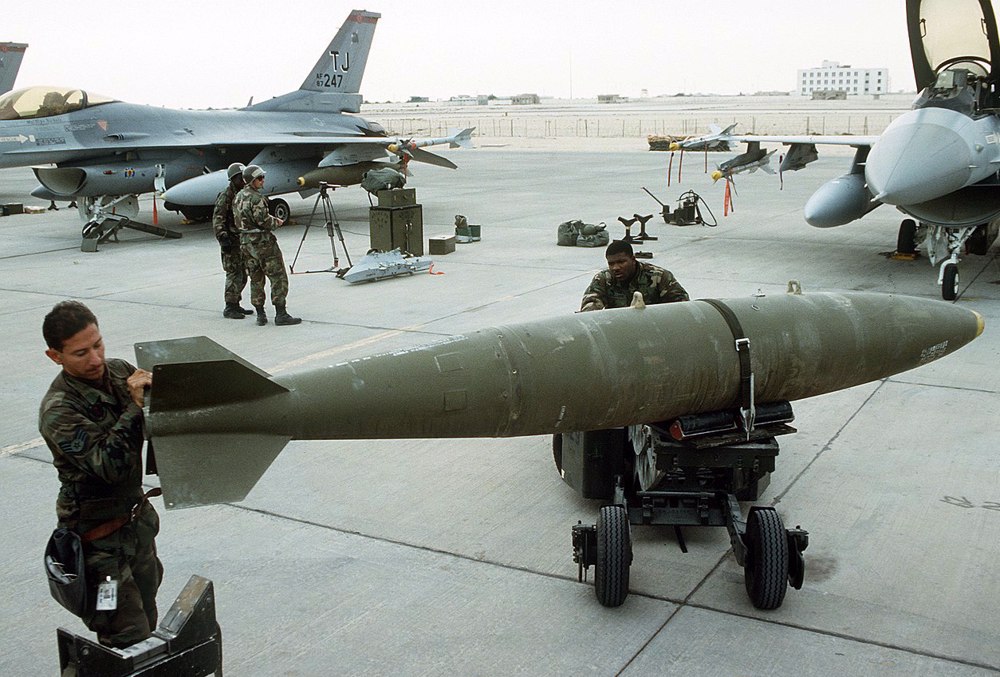
What is an MK-84 bomb?
The MK-84 is a free-fall, unguided general-purpose aerial bomb designed by the United States, part of the MK 80 series Low Drag General Purpose (LDGP) bombs that also includes the smaller MK-81, MK-82 and MK-83.
All are cylindrical in shape and are equipped with conical fins for external high-speed carriage, also fitted for both nose and tail fuzes to ensure reliability and produce effects of blast, cratering or fragmentation.
The MK-84 bomb has a standard weight of 2,000 pounds (907 kg), with about 945 pounds (429 kg) of this being tritonal high explosive, a mixture of TNT and aluminum powder.
Four bombs in the series have streamlined steel cases that are relatively light, weighing approximately 45 percent of their total mass, and are used in the majority of bombing operations where maximum blast and explosive effects are desired.
Once the bomb has been properly delivered by aircraft, it must go through the desired depth and then detonate as designed to achieve the desired weapons effects.
Without specific modifications, the standard MK-84 bomb can break through an estimated 60-105 cm of concrete, or up to five meters of earth, although this can vary based on the angle of impact, speed, soil type and specific environment.
These figures are only valid for an obliquity angle of 0-35°, and anything more than that or the stated penetration depth will result in deflagration, i.e. the deterioration of the weapon to the point where full detonation will no longer occur.
Nose fuzes utilized on the standard MK-84 are problematic for piercing as instantaneous delay results in no penetration, and fuze function delays are often interrupted by case or fuze destruction during the process.
In the improved version of the MK-84 bomb, the original forged steel casing was replaced with the rolled and machined steel, and the nose and aft fuzes were replaced with a single aft fuze, increasing dissemination capabilities by about 70 percent.
Improved variants include the BLU-117 penetrator with a hardened steel case for better breach before detonation, three GBU (Guided Bomb Unit) versions with laser guidance, and GBU‐31 JDAM version equipped with a GPS guidance kit for precision strikes.
The MK-80 series was developed in the 1950s in response to the need for bombs producing less aerodynamic drag and all four bombs have a length-to-diameter ratio of approximately 8:1, resulting in minimal drag for the aircraft platform.
The MK-84 bomb has been carried by a number of aircraft platforms, including the A-10, B-1B, B-52, F-4, F-15, F-16, F-111 and F-117, and in addition to the US, this weapon is also used by the armed forces of Turkey, Saudi Arabia, and the Israeli regime.
It was first used in the 1970s during the American aggression against Vietnam, later also against Iraq, Yugoslavia and Afghanistan, as well as during the Saudi aggression against Yemen and the Israeli aggression against Palestine and Lebanon.
Its use has always been deemed controversial as it is frequently used to strike densely populated areas, causing heavy civilian casualties and material damage.
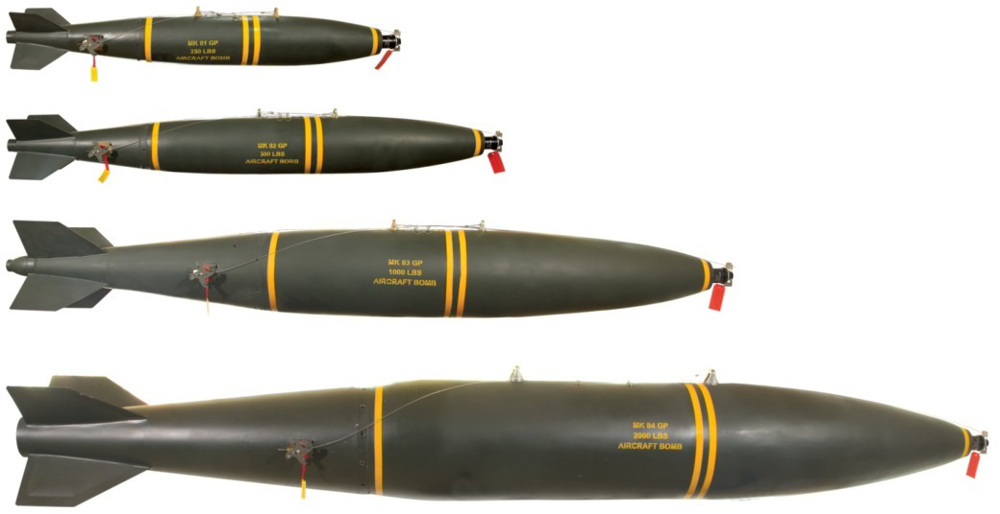
What do MK-84 bombs mean for the Israeli regime?
The Israeli regime's Air Force has been using MK-84 bombs for decades, at least since the early 1980s, and most often drops them from F-16 and F-15 jet fighters.
The arsenal of these bombs is often converted to precision-guided munitions using the Joint Direct Attack Munition (JDAM), Spice and Griffin guidance kits, and also includes the GBU-15 glide version.
MK-84 heavy bombs are not the most destructive weapons in the Israeli conventional aerial arsenal, but the US-made 4,000-pound (1,814 kg) GBU-28 laser-guided "bunker buster" bombs, are specifically designed for penetrating hardened concrete bunkers.
This data does not include weapons of mass destruction such as nuclear bombs, which the Israeli regime is known to possess, nor the 11-ton MOABs that Trump has reportedly approved for delivery to them in the near future.
Despite the MK-84's nominal accuracy, its use is devastating when targeting populated areas, as is stated in UN reports documenting Israeli genocidal war crimes committed with this weapon.
During the Israeli aggression on Lebanon in 2006, this bomb dropped on a three-story house massacred 17 children and 12 adult civilians in Qana, and the use of at least four more pieces in the densely populated south of Beirut was documented.
According to the UN Human Rights Council's report of the detailed findings of the independent commission of inquiry established pursuant to Human Rights Council resolution S-21/1, the Israeli regime used the MK-82/83/84 bombs in 15 massacres during the 2014 Gaza aggression.
Trauma physicians explained that the pressure from the explosion of the Mark-84 JDAM can rupture lungs, burst sinus cavities and tear off limbs hundreds of feet from the blast site.
Military experts consulted by the commission further stated that when it hits, the Mark-84 JDAM generates an 8,500-degree fireball, gouges a 20-foot (6 m) crater as it displaces 10,000 pounds (4,500 kg) of dirt and rock and generates enough wind to knock down walls blocks away and hurl metal fragments a mile (1.6 km) or more.
The UN report concluded that "regardless of how precise the bomb is, it remains extremely questionable whether a weapon with such wide impact area allows its operator to adequately distinguish between civilians and civilian objects and the military objective of the attack when used in densely populated areas."
The Palestinian resistance movement in the Gaza Strip has long been familiar with the Israeli arsenal of aerial bombs and has built a large network of tunnels at suitable depths to protect them from most enemy weapons, including one-ton MK-84 bombs.
Theoretically, these bombs could be useful for destroying tunnel entrances, but not most of the network or command centers, which are often located tens of meters underground.
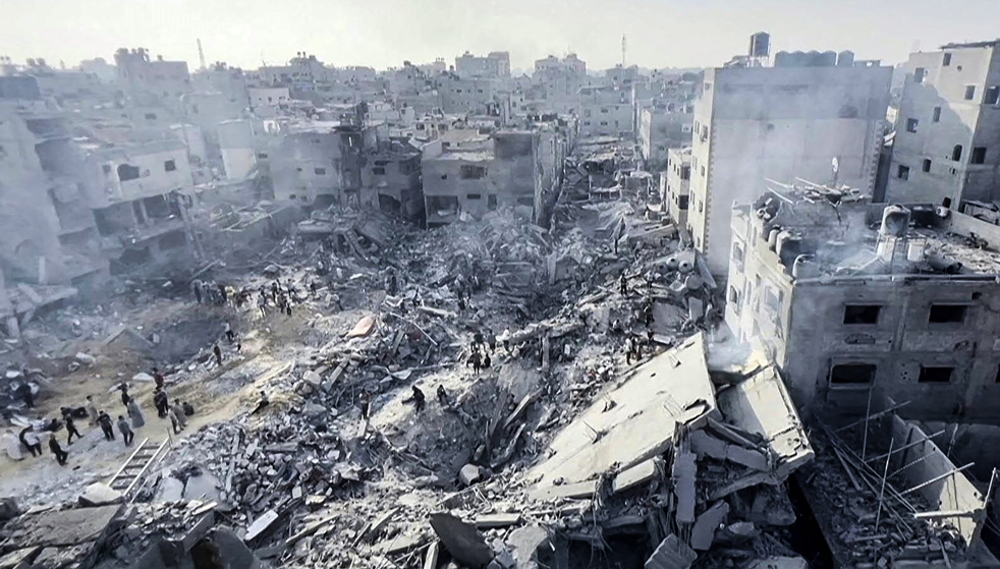
Notable examples of the MK-84's use in the past two years include massacres, such as the Jabalia camp massacre in October 2023 when 120 civilians, mostly women and children, were killed in one of the worst atrocities of the war.
The same type of bomb was used in the al-Mawasi massacre in September 2024, when an Israeli airstrike on a tented encampment near Khan Yunis killed 45 civilians and wounded 60.
The precise extent of the destruction caused by the MK-84 and other bombs from the American MK-80 series will only be known after a thorough investigation by Palestinian organizations and international bodies in the near future.
According to the lowest estimates from the final weeks of the war, the Israeli regime reportedly dropped at least 85,000 tons of bombs on the Gaza Strip, the equivalent of 95,000 individual MK-84 bombs.
Of this tonnage, the majority falls on the MK-80 series, although it cannot be reliably determined how many of these three variants Tel Aviv possessed, received, and used.
Trump's latest shipment of 1,800 pieces is a fraction of the 14,000 MK-84 bombs the Biden administration sent in the first eight months of the aggression, along with 6,500 500-pound (227 kg) MK-82 bombs and 1,000 bunker buster bombs.
In December 2023, after approximately two months of the genocidal war, The Wall Street Journal (WSJ) citing US officials reported the shipment of over 5,400 MK-84 and 5,000 MK-82 bombs, as well as other types.
Pre-war stocks are unknown in precise terms, but only one Israeli order from 2006, just after the war against the Lebanese resistance movement Hezbollah, testifies that they ordered a total of 13,550 MK-84, MK-82, BLU-109 and GBU-28 bombs.
Earlier Press TV analyses estimated the pre-war stockpile at between 20,000 and 30,000 tons, and taking into account the dynamics of orders and share of certain types of bombs, it can be reckoned that the majority of the tonnage was MK-84 bombs.

‘Complete humanitarian collapse’ imminent in Gaza: Media office

UN envoy urges journalists to speak out on Gaza genocide
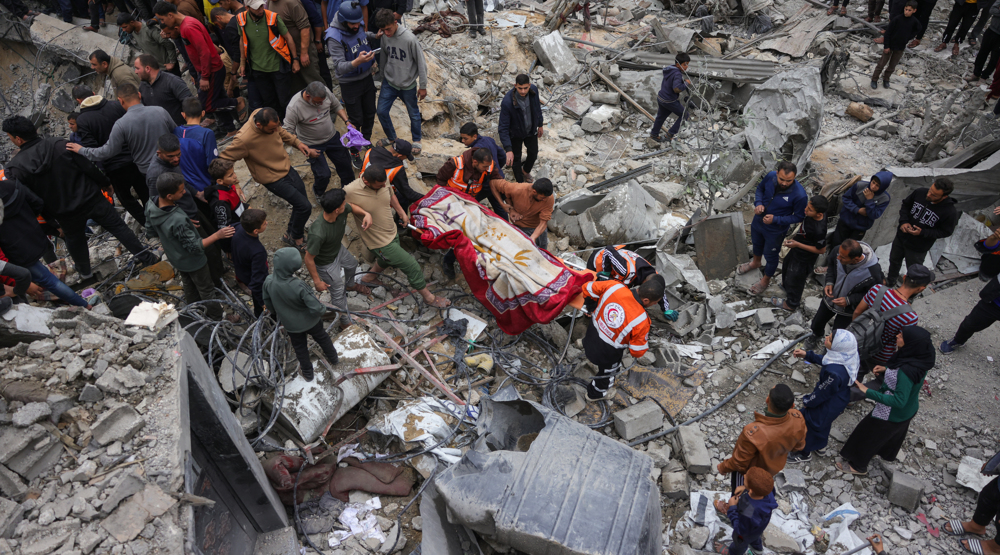
Israel bombed Gaza with explosives equivalent to 6 Hiroshima bombs: Report
VIDEO | Education under siege: UN warns of school closures in occupied al-Quds
VIDEO | Israeli drones burn children inside 'safe zone'
VIDEO | Gaza Christians mourn amid Israeli genocide
Russia: Europe trying to ‘derail’ talks with US, continue war
Saudi Arabia, Iran stress willingness to expand military ties
VIDEO | Trump tariffs threaten ...
VIDEO | Iran's indirect talks on sanctions removal
VIDEO | Israeli concern over nuclear talks










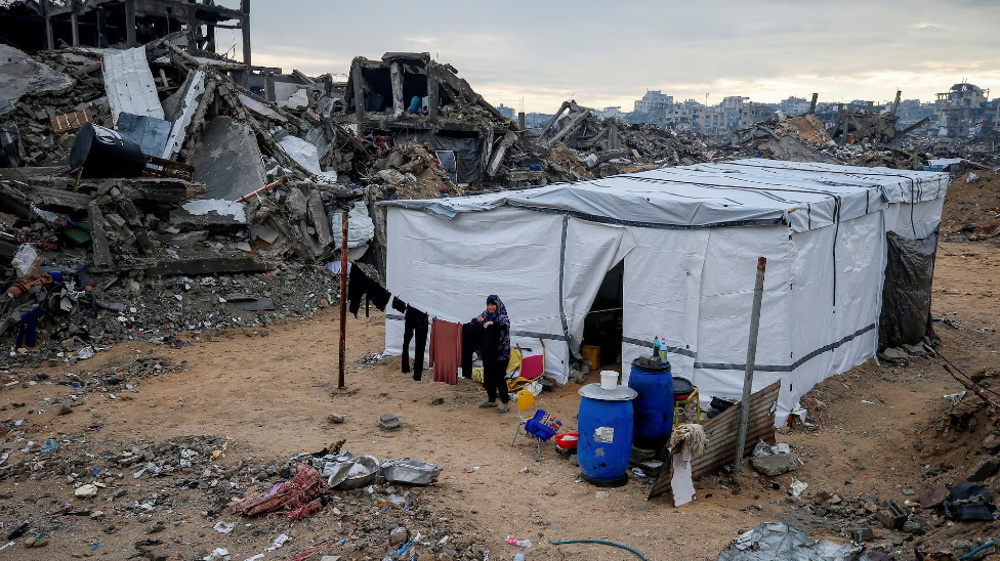

 This makes it easy to access the Press TV website
This makes it easy to access the Press TV website